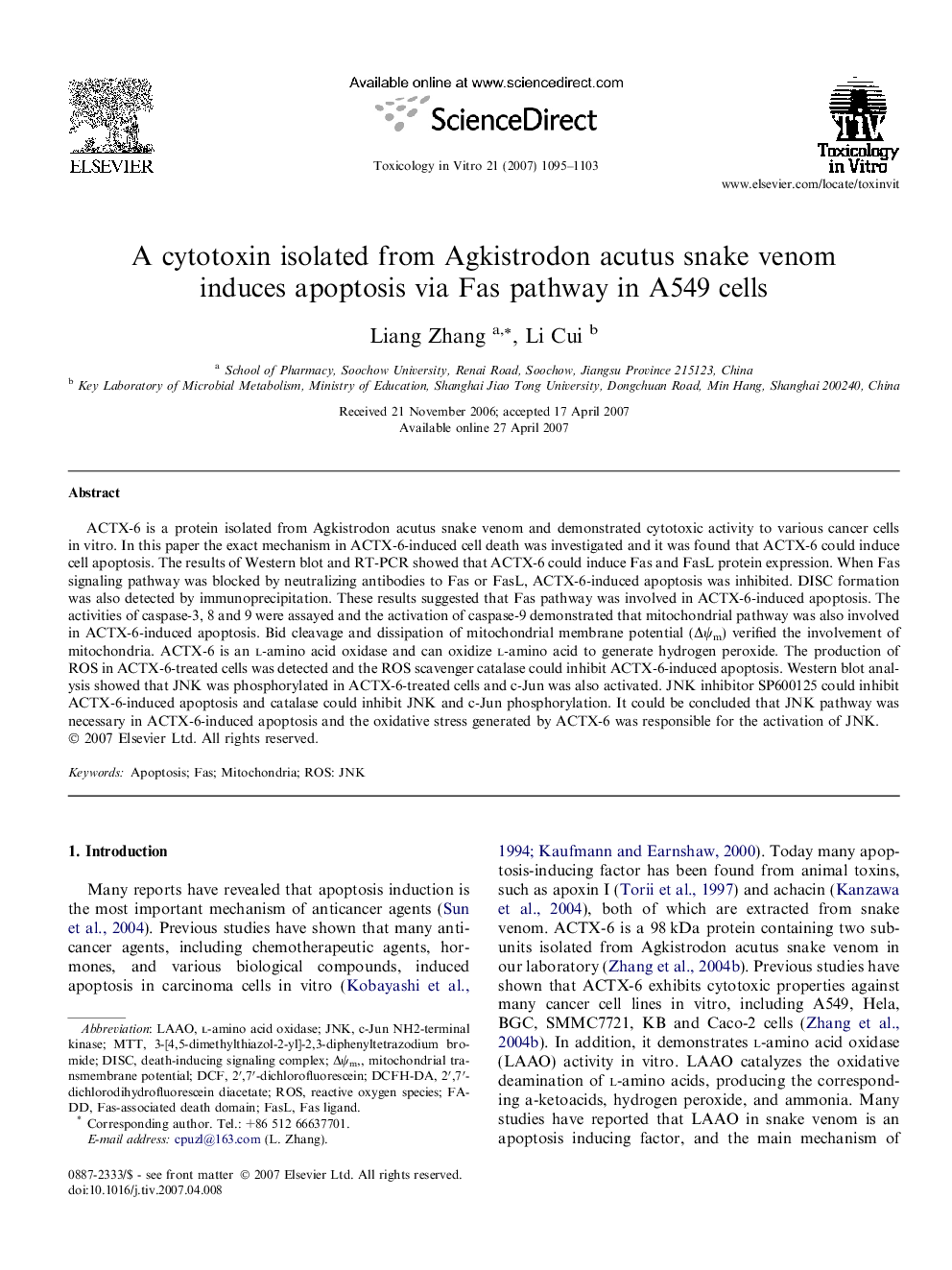| Article ID | Journal | Published Year | Pages | File Type |
|---|---|---|---|---|
| 2603773 | Toxicology in Vitro | 2007 | 9 Pages |
ACTX-6 is a protein isolated from Agkistrodon acutus snake venom and demonstrated cytotoxic activity to various cancer cells in vitro. In this paper the exact mechanism in ACTX-6-induced cell death was investigated and it was found that ACTX-6 could induce cell apoptosis. The results of Western blot and RT-PCR showed that ACTX-6 could induce Fas and FasL protein expression. When Fas signaling pathway was blocked by neutralizing antibodies to Fas or FasL, ACTX-6-induced apoptosis was inhibited. DISC formation was also detected by immunoprecipitation. These results suggested that Fas pathway was involved in ACTX-6-induced apoptosis. The activities of caspase-3, 8 and 9 were assayed and the activation of caspase-9 demonstrated that mitochondrial pathway was also involved in ACTX-6-induced apoptosis. Bid cleavage and dissipation of mitochondrial membrane potential (Δψm) verified the involvement of mitochondria. ACTX-6 is an l-amino acid oxidase and can oxidize l-amino acid to generate hydrogen peroxide. The production of ROS in ACTX-6-treated cells was detected and the ROS scavenger catalase could inhibit ACTX-6-induced apoptosis. Western blot analysis showed that JNK was phosphorylated in ACTX-6-treated cells and c-Jun was also activated. JNK inhibitor SP600125 could inhibit ACTX-6-induced apoptosis and catalase could inhibit JNK and c-Jun phosphorylation. It could be concluded that JNK pathway was necessary in ACTX-6-induced apoptosis and the oxidative stress generated by ACTX-6 was responsible for the activation of JNK.
